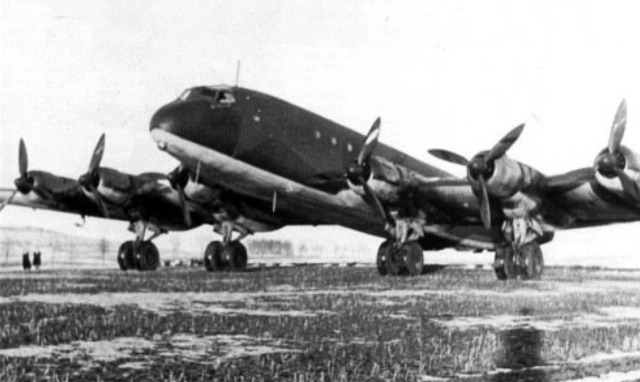- Yes
- No
- Tech-Tree
- Event
- Battlepass
- Premium
- I said No
- 6.7
- 7.0
- 7.3
- Higher
- I said No

Hello everyone :), what I would like to introduce today is Junkers Ju 390.
During World War II, Germany set its sights on the United States across the Atlantic, but it did not have its own large bombers capable of bombing the United States across the Atlantic, which gave rise to the new heavy bomber program in 1943. This project, also known as the ‘New York Bomber’, aims to take off from Germany and fly directly to the East Coast of the United States, returning to Germany after completing the mission.
The competing companies include Fokker Wulff, Messerschmidt, and Junkers. The plan proposed by Fokker Wulff Company is an improvement based on the FW-300 transport aircraft, namely the Ta-400 plan, Messerschmitt Company is the P-1061 project (Me-264 plan), and Junkers Company is an enlarged version of the Ju 290, Ju 390 plan, and Ju 290 is an improved version of the Ju 90. In the end, Ju 390 successfully competed and manufactured a prototype for testing.

In order to reduce design time, the Ju 390 extended the fuselage and wings of the existing Ju 290 to support long-range capabilities. In addition, the designers also inserted an engine into each wing of the Ju-290, using a total of six engines, including the BMW 801E radial piston engine. Each engine has a power output of 1700 horsepower and drives three bladed propellers. The aircraft has a large ammunition compartment, but its specific mounting capacity is unknown.
The first flight of the V1 prototype was recorded on October 20, 1943, and revealed a promising beginning for large bombers. Its testing continued until the end of the war, in 1945, and the entire project was never delivered, only remaining in the prototype testing phase. Initially, 26 Ju 390s were ordered, but the plan was cancelled in June 1944. As the war progressed and Germany’s strategic position weakened, resources and focus shifted to more urgent and pressing needs Although the Junkers Ju 390 project is large-scale, it has encountered some technical challenges and limitations that have seriously affected its development and potential operational efficiency.
It is said that the prototype crossed the Atlantic and entered US airspace, flying to a distance of 20km from New York before safely returning. But the authenticity of this matter has been questioned, and such a huge steel monster could not have gone unnoticed. But this matter can no longer be verified. Anyway, the so-called ‘New York bomber’ eventually disappeared into the long river of history and only existed as a crazy project in the photos.
Ju 390 is a very huge aerial steel monster. Its wingspan reaches an astonishing 50 meters, and its range allows it to fly directly from Germany to New York. It also has a huge payload capacity and a large number of self-defense weapons. Unfortunately, it only produced a prototype, so it is recommended to add it as a Battlepass reward to the game. Suggestion BR: 7.3.
- Crew:10
- Engine:6 x BMW 801E radial piston engine(1700hp each)
- Empty weight: 36900 kilograms
- Maximum takeoff weight: 75500 kilograms
- Maximum range: 9500 kilometers
- Maximum speed: 505 km/h
- Self Defense Weapons:
8 × 20mm MG 151
8 × 13mm MG 131 - Wingspan: 50.30 meters
Length: 34.20 meters
Height: 6.89 meters
Sources
- Junkers JU-390: The German Bomber That Almost Brought the Blitz to New York
- Junkers Ju 390 (New York Bomber) Long-Range Heavy Bomber / Transport Aircraft Prototype
- https://www.historicmysteries.com/history/amerika-bomber-ju-390-fly-to-us/16723/
- https://history.info/on-this-day/1943-junkers-ju-390-nazi-plane-for-bombing-new-york/
- Junkers Ju 390 (New York Bomber): Photos, History, Specification
- Junkers Ju 390 New York Blitz Bomber - PlaneHistoria
- http://www.warbirdsresourcegroup.org/LRG/ju390.html
- Junkers Ju 290 and Ju 390 - Technical pages - German U-boats of WWII - Kriegsmarine - uboat.net

































